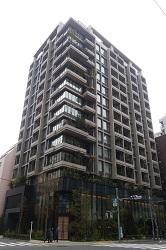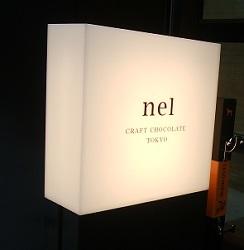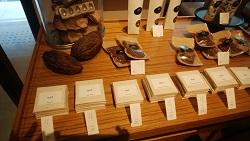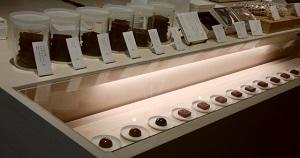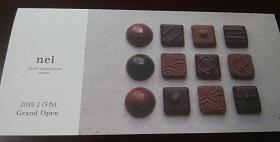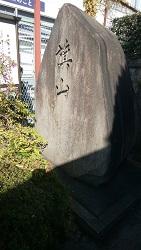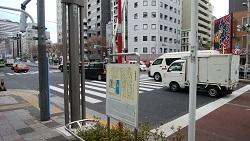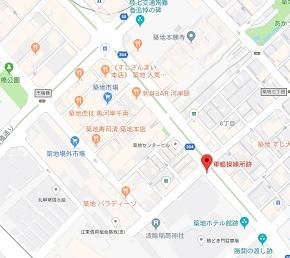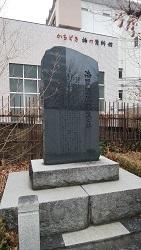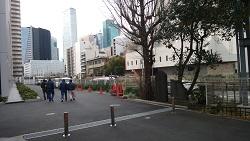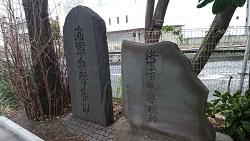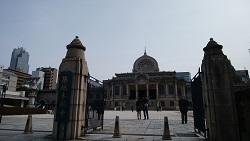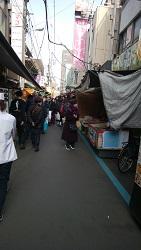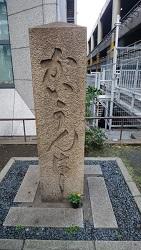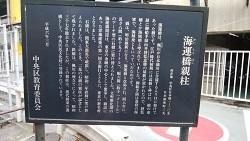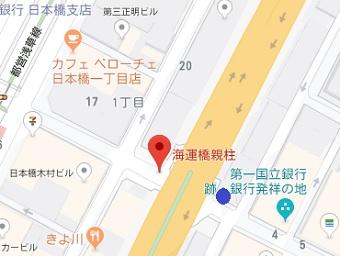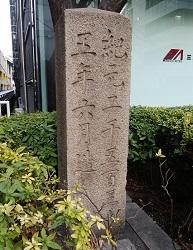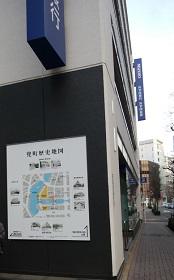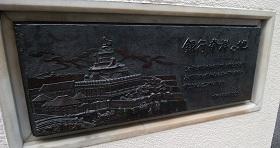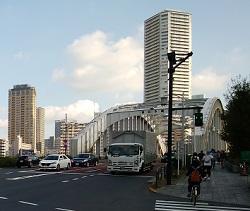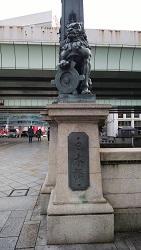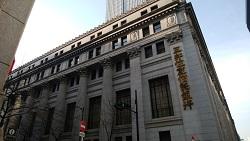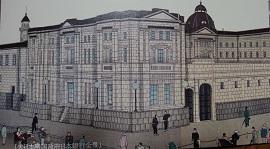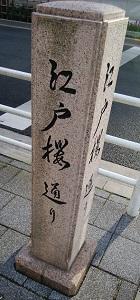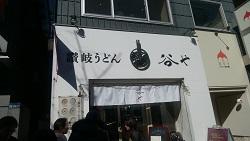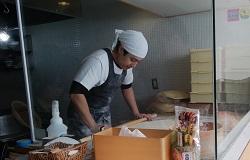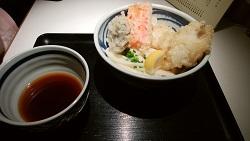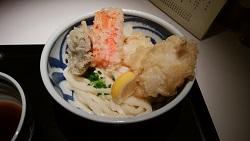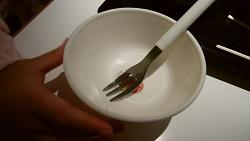This is Edamame, a correspondent with children.![]()
1 → /archive/2019/02/11-14.html
2 → /archive/2019/02/11-15.html
3 → /archive/2019/02/11-16.html
And continue to do so.
From the "11th Chuo-ku Tourism Certification" conducted on February 3 (Sun)
I would like to take up the problem you care about.
Question 34 "Bettara City", which is held every year on October 19 and 20, is an autumn feature of Chuo-ku.
It is said to have originated in the city that sold offering, an event held on October 20.
So, which of the following events were learned to take place on October 20?
A. 19th night lecture Tori-no-ichi Fair U. Kayaba-cho Yakushi Pilgrimage E. Ebisu Lecture
For those who have studied or taken a walk about Chuo-ku a little
Isn't the answer itself not so difficult? I thought it.
The right answer is ... a photo of the past Betara city in my smartphone.
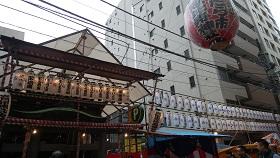
There's a huge Japanese lantern in the upper right.
It says "Ebisu Shrine" in it.
"Bettara City" was held in front of "Takarada Ebisu Shrine" in Otemmacho.
"Ebisu-ko" is the beginning.
By the way, what is "Ebisu-ko"?
Ebisu-sama, a paper for commerce and agriculture.
Along with lucky items such as image of deity, hammered hammer, sea bream, and Kirisansho.
I wished for business prosperity.
Speaking of which ...
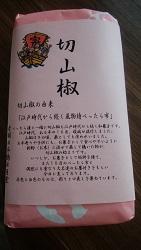
Edamame, when I went to Bettara City, I bought Kirisansho.
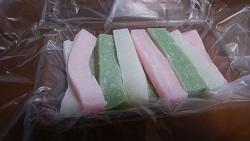
This was also the offering of Ebisu-ko, so it was sold there.
I remember the refreshing flavor of Sansho was pleasant.
That's why the answer is d.
Yeah.
Why was Edamame "worry" about this problem?
"...What is the nineteenth night course? ?」
B. Tori-no-ichi Fair of
It is also held at Matsushima Shrine in Ningyocho in Chuo-ku.
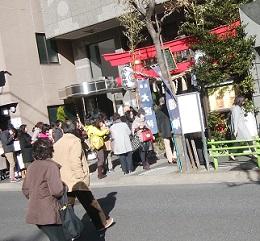
(The photo shows the New Year's Day of some year.)
Previously, a senior correspondent, Shiba Inu, took up about Tori-no-ichi Fair.
/archive/2018/11/post-5817.html
C. For the visit to Kayaba-cho Yakushi, divide one page with plenty of official text.
There is a detailed explanation.
The statue of Yakushi Nyorai at Chisen-in in Kayabacho was gathering the religion of the common people of Edo.
Ueki City was also held in fair on the 8th and 12th of every month, and it was very lively.
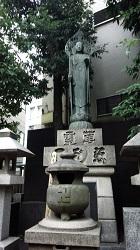
(This is a statue of Jizo Bodhisattva standing in the precincts of Chisen-in Temple where Yakushi, Kayabacho was located)
But I had never heard of the nineteenth night course.
I decided to check it out.
[Koyasugami]
The god of child care. In the article of the Third Real Record of Japan, Jogan, July 11, 876
As you can see from the fact that the name has already appeared, it is an old faith.
It was held in various places.
At present, there are many things linked to other religions such as Koyasu Kannon, Koyasu Jizo, and Koyasu Yahata.
In eastern Japan, there is a place called Koyasu-ko, where women gather and worship Koyasu-sama.
Since it gathers on the 19th of the month, it is also called the 19th night course or the 19th night.
(From the description of the encyclopedia of the Britannica International University Encyclopedia)
I see. It was the "Lecture" of the faith of Koyasu.
And the date is covered by the 19th when "Betara City" is held!
It might have been perfect in a sense to make it a "good choice" (laughs).
・・・ And is there a place in Chuo-ku dedicated to Koyasujin?
I couldn't find Edamame because I didn't study.
In Tokyo, there seem to be some shrines named "Koyasu".
I'd like to check out the shrine's enshrined deity during a walk.
That's why I think about the religion of the Edo period.
It was a problem that has been a little oversight.
If you delve into the problem that you solved, there are many discoveries.
You don't want to miss what you're wondering or getting caught.
